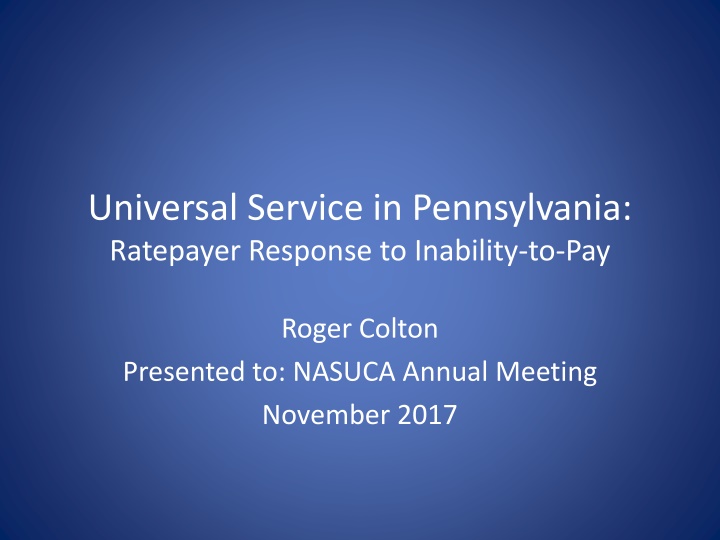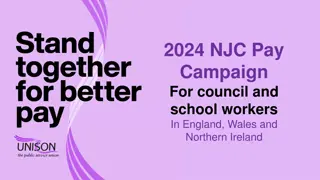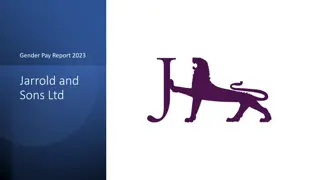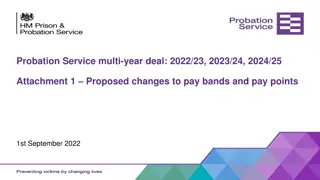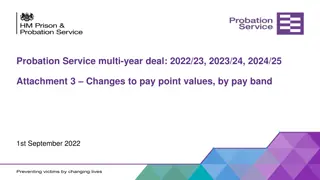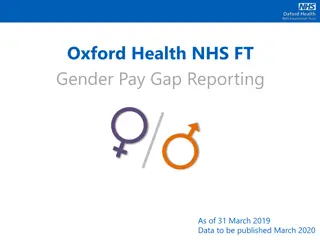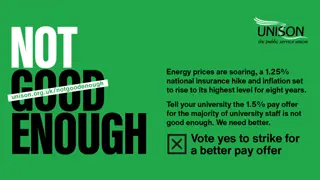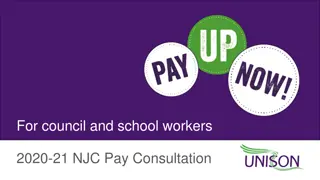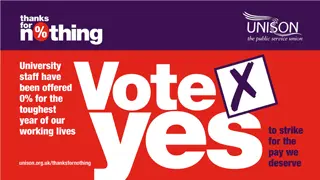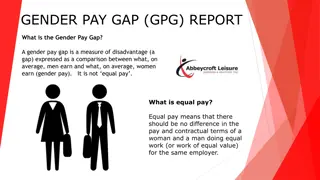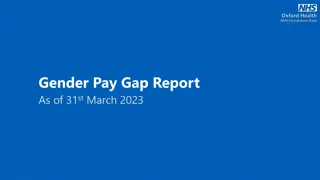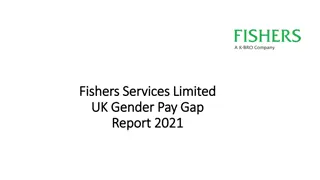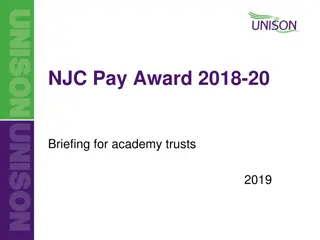Universal Service in Pennsylvania: Ratepayer Response to Inability-to-Pay
Presentation on Pennsylvania's Customer Assistance Program (CAP), which includes bill assistance, referral services, energy efficiency programs, and crisis grants. Focus on CAPs' structure, attributes, and challenges for low-income individuals.
Download Presentation

Please find below an Image/Link to download the presentation.
The content on the website is provided AS IS for your information and personal use only. It may not be sold, licensed, or shared on other websites without obtaining consent from the author.If you encounter any issues during the download, it is possible that the publisher has removed the file from their server.
You are allowed to download the files provided on this website for personal or commercial use, subject to the condition that they are used lawfully. All files are the property of their respective owners.
The content on the website is provided AS IS for your information and personal use only. It may not be sold, licensed, or shared on other websites without obtaining consent from the author.
E N D
Presentation Transcript
Universal Service in Pennsylvania: Ratepayer Response to Inability-to-Pay Roger Colton Presented to: NASUCA Annual Meeting November 2017
Four-part PA universal service program: Customer Assistance Program ( CAP ) (bill assistance) Customer Assistance and Referral Evaluation Services (CARES) (referral service) Low-Income Usage Reduction Program ( LIURP ) (energy efficiency) Hardship funds (crisis grants) Will focus today on CAPs.
Need for CAPs in Pennsylvania (2015) Electric Natural Gas Non-low- income Non-low- income Low-Income Low-Income Percent accounts in arrears 9.1% 25.9% 9.3% 18.2% Average dollars of arrears $452 $672 $470 $566 Termination rate 4.4% 15.8% 3.9% 12.0% Bad debt rate 2.3% 9.8% 3.9% 14.0% Pct collection expenses LI 58.4% 37.9%
Basic Structure of Pennsylvania CAPs Fundamentally, a percentage of income plan. Annual bills set equal to affordable percentage of income. The percentage of income burdens are tiered by Poverty Level. Three tiers: 0-50% / 50-100% / 100-150% Low-income defined: At or below 150% FPL False sense of expansion to go above 150% FPL
Other Attributes of Pennsylvania CAPs Arrearage forgiveness: based on complete payment (whether or not timely). Response to nonpayment is to place CAP participant in collection cycle, not program removal. Periodic income reverification / program recertification. Moving away from annual reverification.
Some Caveats on Basic PA CAP Designs PIP alternatives allowed: CGPA: Average of prior payments (rather than PIP). PECO: Fixed Credit rather than Fixed Payment. Percentage of bill discouraged. Increased costs / Inefficient costs / Lack of affordability Cost control (aside from affordable burdens). Maximum annual CAP credit ceiling Tiered by FPL. Some exceptions (usage beyond control of customer) Minimum monthly payment.
Some big outstanding issues (PA CAPs) Appropriate level of affordable burden. Consider entire program context. Whether auto-enrollment (e.g., LIHEAP) Interrelationship between CAP and LIHEAP: OCA position vs. low-income / DHS Target payment-troubled for enrollment Distinguish targeted enrollment and eligibility.
Pennsylvania CAPs: Cost recovery Reconcilable surcharges (legislation specific). OCA opposed: advocate base rate recovery Cost offsets: Working capital Bad debt expense
For more information: http://www.fsconline.com News Library
For more information, contact: roger@fsconline.com
Appendix Outcome Data from Public Service Company of Colorado Pilot Percentage of Income-Based Energy Assistance Program (EAP)
The cost-effectiveness plane Less effective and more expensive More effective and more expensive Less effective and less expensive More effective and less expensive 12
Payment coverage ratios 0.9 0.8 0.7 0.6 0.5 0.4 0.3 0.2 0.1 0 Program participants Low-income nonparticipants Cumulative Customer Payment Coverage Ratio for PSCO Low-Income Participants Compared to Low- Income Non-Participants 13
DNP Notices per 1,000 Payments 1.6 1.4 1.2 1 0.8 0.6 0.4 0.2 0 Cumulative affordability program participants Cumulative non-participants (Month 1 arrears = $1 - $250) Cumulative non-participnats (Month 1 arrears = $251+) Cumulative Disconnect Notices per 1,000 Customer Payments for Affordability Participants Compared with Non-Participants by Level of Month 1 Non-Participant Arrears. 14
DNP Notices per $1,000 Payments 8 7 6 5 4 3 2 1 0 Program participant Non-participant (Month 1 arrears = $1 -= $250) Non-participant (Month 1 arrears = $251+) Cumulative Disconnect Notices for Nonpayment per $1,000 in Customer Payments for Affordability Participants Compared to Non-participants by Level of Non-participant Month 1 Arrears. 15
Payments after DNP Notice 80% 70% 60% 50% 40% 30% 20% 10% 0% Program participant Non-participant Percent of Customers Receiving DNP Notices with Customer Payment Coverage Ratio > 1.0 in 4-Months After DNP Notice 16
Payments Yielding $0 Balances by Number of Payments 0.9 0.8 0.7 0.6 0.5 0.4 0.3 0.2 0.1 0 Non-participant Participant Ratio of Number of Payments Resulting in $0 Balance to Number of Payments by Program Participation. Ratio of Number of Payments Resulting in $0 Balance to Number of Payments by Program Participation. 17
Low-Customer Payment Coverage Ratio after Receiving DNP Notice 50% 45% 40% 35% 30% 25% 20% 15% 10% 5% 0% Program participants Program non-participants Customer Payment Coverage Ratio > 0 <0.50 for Customers Receiving DNP Notice in 4-Months after Receiving DNP Notice
Conclusions To the extent that nonpayment is associated with inability to pay, low-income services can be a cost-effective response to nonpayment. A continuing, let alone an increased, reliance on traditional credit and collection activities directed toward inability-to- pay customers is not the most effective, let alone the most cost-effective, nonpayment response. The discussion above neither proposes, nor recommends, a specific low-income service. A suite of nonpayment responses (to be determined) is likely to be the most effective and cost-effective response to inability-to-pay nonpayment. 19
